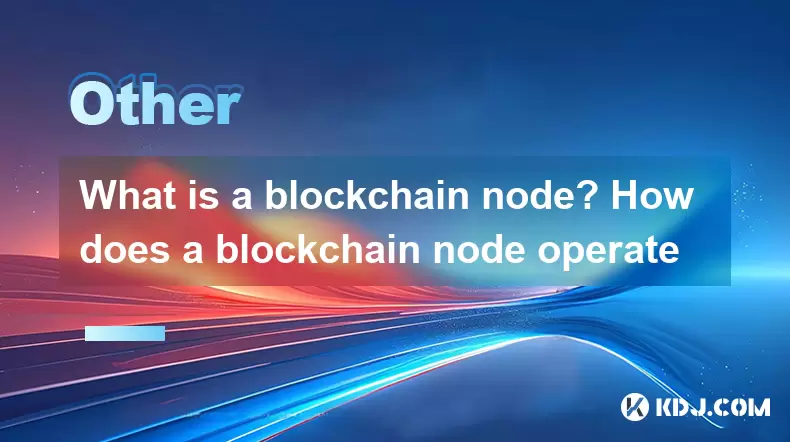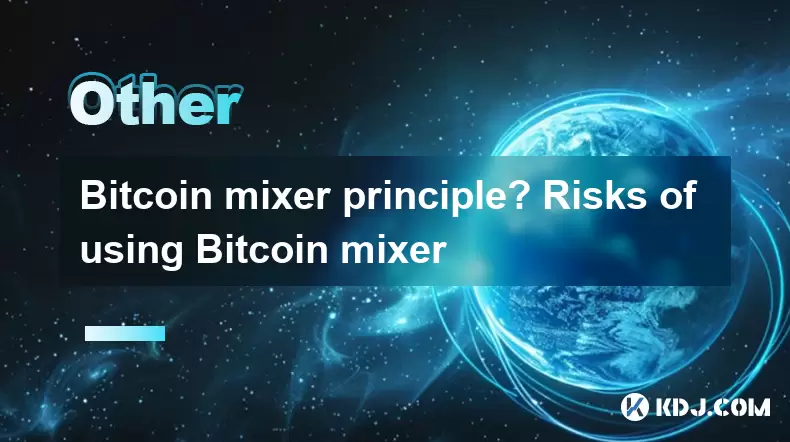-
 Bitcoin
Bitcoin $106,754.6083
1.33% -
 Ethereum
Ethereum $2,625.8249
3.80% -
 Tether USDt
Tether USDt $1.0001
-0.03% -
 XRP
XRP $2.1891
1.67% -
 BNB
BNB $654.5220
0.66% -
 Solana
Solana $156.9428
7.28% -
 USDC
USDC $0.9998
0.00% -
 Dogecoin
Dogecoin $0.1780
1.14% -
 TRON
TRON $0.2706
-0.16% -
 Cardano
Cardano $0.6470
2.77% -
 Hyperliquid
Hyperliquid $44.6467
10.24% -
 Sui
Sui $3.1128
3.86% -
 Bitcoin Cash
Bitcoin Cash $455.7646
3.00% -
 Chainlink
Chainlink $13.6858
4.08% -
 UNUS SED LEO
UNUS SED LEO $9.2682
0.21% -
 Avalanche
Avalanche $19.7433
3.79% -
 Stellar
Stellar $0.2616
1.64% -
 Toncoin
Toncoin $3.0222
2.19% -
 Shiba Inu
Shiba Inu $0.0...01220
1.49% -
 Hedera
Hedera $0.1580
2.75% -
 Litecoin
Litecoin $87.4964
2.29% -
 Polkadot
Polkadot $3.8958
3.05% -
 Ethena USDe
Ethena USDe $1.0000
-0.04% -
 Monero
Monero $317.2263
0.26% -
 Bitget Token
Bitget Token $4.5985
1.68% -
 Dai
Dai $0.9999
0.00% -
 Pepe
Pepe $0.0...01140
2.44% -
 Uniswap
Uniswap $7.6065
5.29% -
 Pi
Pi $0.6042
-2.00% -
 Aave
Aave $289.6343
6.02%
What is a blockchain node? How does a blockchain node operate
A blockchain node is a critical device that maintains the ledger, validates transactions, and supports decentralization across the network.
Jun 15, 2025 at 11:07 pm

What Is a Blockchain Node?
A blockchain node is a fundamental component of any decentralized network. In simple terms, a node is a computer or device that participates in the operation of a blockchain by maintaining a copy of the distributed ledger and validating transactions. Each node contributes to the overall security, transparency, and decentralization of the blockchain system.
Nodes are essential because they store data, verify transactions, and relay information across the network. Without nodes, there would be no blockchain — it's the nodes that ensure consensus and prevent fraudulent activities.
Types of Blockchain Nodes
There are several types of nodes within a blockchain ecosystem, each serving a unique function:
Full Nodes: These nodes download the entire blockchain, validate all transactions, and enforce consensus rules. Full nodes are crucial for maintaining network integrity.
Lightweight (Light) Nodes: These nodes do not store the complete blockchain and rely on full nodes for transaction verification. They are commonly used in mobile wallets due to limited storage capacity.
Mining Nodes: These nodes participate in the mining process, which involves solving complex cryptographic puzzles to add new blocks to the chain. Mining nodes are typically associated with Proof-of-Work (PoW) blockchains like Bitcoin.
Staking Nodes: Also known as validator nodes, these operate in Proof-of-Stake (PoS) systems where users must lock up a certain amount of cryptocurrency to participate in block validation.
Masternodes: These nodes provide additional services beyond transaction validation, such as enabling private transactions or participating in governance decisions. Masternodes usually require a significant collateral investment.
Each type plays a specific role in supporting the decentralized nature of blockchain technology.
How Does a Blockchain Node Operate?
When a node joins a blockchain network, it begins by downloading the entire history of the blockchain from other nodes. This synchronization ensures that the new node has an accurate and up-to-date version of the ledger.
Once synchronized, the node performs several key functions:
Transaction Validation: When a user initiates a transaction, it is broadcast to the network. The node checks whether the transaction meets all consensus rules, including digital signatures and available funds.
Block Propagation: Validated transactions are grouped into blocks. Nodes relay these blocks to other nodes, ensuring that all participants receive the same updated ledger.
Consensus Participation: Depending on the blockchain’s consensus mechanism, nodes may vote, mine, or stake to agree on the next valid block.
Data Storage: Nodes store the blockchain data locally, making it accessible for future reference and audits.
These operations happen continuously, allowing the blockchain to remain functional, secure, and transparent.
Setting Up a Blockchain Node: Step-by-Step Guide
To run your own node, follow these detailed steps:
Choose the Type of Node You Want to Run: Decide whether you're setting up a full node, light node, staking node, or masternode based on your resources and goals.
Select the Appropriate Hardware and Software: Ensure your machine meets the minimum requirements, such as disk space, RAM, and bandwidth. Download the official client software for the blockchain you want to support.
Download and Install the Software: Follow the installation instructions provided by the blockchain project. For example, running a Bitcoin node requires downloading the Bitcoin Core wallet.
Open Necessary Ports on Your Router: To allow incoming connections, configure port forwarding on your router. Common ports include 8333 for Bitcoin.
Start the Synchronization Process: Launch the node software and allow it to download the entire blockchain. This can take hours or even days depending on your internet speed and hardware.
Verify Node Functionality: Use built-in tools or external explorers to confirm that your node is successfully validating and relaying transactions.
Running a node enhances network security and gives you greater control over your transactions.
Importance of Running a Node
Operating a node provides multiple benefits to both individuals and the broader blockchain ecosystem:
Increased Security: By running a node, you eliminate reliance on third-party services, reducing the risk of fraud or manipulation.
Privacy Protection: Full nodes allow users to verify transactions independently, preventing the need to disclose personal data to external entities.
Network Decentralization: More nodes mean a more distributed network, making it harder for malicious actors to compromise the system.
Contribution to Consensus: Nodes help maintain the integrity of the blockchain by enforcing rules and ensuring only valid transactions are accepted.
Individuals who operate nodes contribute directly to the resilience and reliability of the blockchain infrastructure.
Frequently Asked Questions
Can I Run Multiple Nodes on the Same Device?
Yes, it's technically possible to run multiple nodes on a single machine using virtual machines or containerization tools like Docker. However, this requires sufficient CPU, memory, and storage resources to handle concurrent operations without performance degradation.
Do All Blockchains Require Nodes?
All public blockchains depend on nodes to function. Private or permissioned blockchains may have fewer nodes controlled by specific organizations, but nodes remain essential for transaction validation and data storage regardless of the network type.
What Happens If a Node Goes Offline?
If a node disconnects temporarily, it will automatically resynchronize once reconnected. However, prolonged downtime might result in missed transactions or reduced contribution to consensus mechanisms, especially in staking or masternode scenarios.
Are There Any Risks Involved in Running a Node?
While running a node is generally safe, potential risks include increased electricity usage, exposure to cyberattacks if proper security measures aren't taken, and potential legal issues depending on local regulations regarding cryptocurrencies.
Disclaimer:info@kdj.com
The information provided is not trading advice. kdj.com does not assume any responsibility for any investments made based on the information provided in this article. Cryptocurrencies are highly volatile and it is highly recommended that you invest with caution after thorough research!
If you believe that the content used on this website infringes your copyright, please contact us immediately (info@kdj.com) and we will delete it promptly.
- Algorand (ALGO) and Bitcoin Cash (BCH) Prices Stabilize Around Key Levels
- 2025-06-16 15:00:12
- Co-citation based data augmentation for contrastive learning of scientific domains
- 2025-06-16 15:00:12
- Despite surge in number of unmanned photo studios in Seoul's Myeong-dong district, sales growth has failed to keep pace.
- 2025-06-16 14:55:13
- The transaction value of domestic coin exchanges plunged as lateral guarantees continued in the virtual asset market.
- 2025-06-16 14:55:13
- Bitcoin (BTC) price extends lead over altcoins as open interest and volume surge
- 2025-06-16 14:50:12
- 11 altcoins with one-time tokens unlock more than $5 million each in the next seven days.
- 2025-06-16 14:50:12
Related knowledge

What is blockchain hash algorithm? Discussion on the security of hashing algorithms
Jun 13,2025 at 09:22pm
Understanding the Role of Hash Algorithms in BlockchainA hash algorithm is a cryptographic function that takes an input (or 'message') and returns a fixed-size string of bytes. The output, typically represented as a hexadecimal number, is known as a hash value or digest. In blockchain technology, hash algorithms are foundational to ensuring data integri...

How does Ethereum PoS mechanism work? Analysis of advantages and disadvantages of PoS mechanism
Jun 14,2025 at 09:35pm
Understanding the Basics of Ethereum's PoS MechanismEthereum transitioned from a Proof-of-Work (PoW) to a Proof-of-Stake (PoS) consensus mechanism through an upgrade known as The Merge. In PoS, validators are chosen to create new blocks based on the amount of cryptocurrency they are willing to stake as collateral. This replaces the energy-intensive mini...

Bitcoin mixer principle? Risks of using Bitcoin mixer
Jun 14,2025 at 05:35am
What Is a Bitcoin Mixer?A Bitcoin mixer, also known as a Bitcoin tumbler, is a service designed to obscure the transaction trail of Bitcoin by mixing it with other coins. The core idea behind this tool is to enhance privacy and make it more difficult for third parties, such as blockchain analysts or law enforcement agencies, to trace the origin of speci...

How to invest in cryptocurrency? Cryptocurrency fixed investment plan formulation
Jun 15,2025 at 09:14pm
Understanding the Basics of Cryptocurrency InvestmentBefore diving into a fixed investment plan for cryptocurrency, it is crucial to understand what cryptocurrency investment entails. Cryptocurrency refers to digital or virtual currencies that use cryptography for security and operate on decentralized networks based on blockchain technology. Investing i...

What is Ethereum state channel? State channel use case
Jun 14,2025 at 08:35am
Understanding Ethereum State ChannelsEthereum state channels are a Layer 2 scaling solution designed to enhance the speed and reduce the cost of transactions on the Ethereum blockchain. These channels allow participants to conduct multiple off-chain interactions without broadcasting every transaction to the main Ethereum network. The core idea behind st...

What does Bitcoin halving affect? Historical analysis of Bitcoin halving
Jun 14,2025 at 10:02am
Understanding the Significance of Bitcoin HalvingBitcoin halving is a programmed event that occurs approximately every four years, or more specifically, every 210,000 blocks. During this process, the reward given to miners for validating transactions on the Bitcoin network is cut in half. This mechanism is built into Bitcoin’s protocol to control the su...

What is blockchain hash algorithm? Discussion on the security of hashing algorithms
Jun 13,2025 at 09:22pm
Understanding the Role of Hash Algorithms in BlockchainA hash algorithm is a cryptographic function that takes an input (or 'message') and returns a fixed-size string of bytes. The output, typically represented as a hexadecimal number, is known as a hash value or digest. In blockchain technology, hash algorithms are foundational to ensuring data integri...

How does Ethereum PoS mechanism work? Analysis of advantages and disadvantages of PoS mechanism
Jun 14,2025 at 09:35pm
Understanding the Basics of Ethereum's PoS MechanismEthereum transitioned from a Proof-of-Work (PoW) to a Proof-of-Stake (PoS) consensus mechanism through an upgrade known as The Merge. In PoS, validators are chosen to create new blocks based on the amount of cryptocurrency they are willing to stake as collateral. This replaces the energy-intensive mini...

Bitcoin mixer principle? Risks of using Bitcoin mixer
Jun 14,2025 at 05:35am
What Is a Bitcoin Mixer?A Bitcoin mixer, also known as a Bitcoin tumbler, is a service designed to obscure the transaction trail of Bitcoin by mixing it with other coins. The core idea behind this tool is to enhance privacy and make it more difficult for third parties, such as blockchain analysts or law enforcement agencies, to trace the origin of speci...

How to invest in cryptocurrency? Cryptocurrency fixed investment plan formulation
Jun 15,2025 at 09:14pm
Understanding the Basics of Cryptocurrency InvestmentBefore diving into a fixed investment plan for cryptocurrency, it is crucial to understand what cryptocurrency investment entails. Cryptocurrency refers to digital or virtual currencies that use cryptography for security and operate on decentralized networks based on blockchain technology. Investing i...

What is Ethereum state channel? State channel use case
Jun 14,2025 at 08:35am
Understanding Ethereum State ChannelsEthereum state channels are a Layer 2 scaling solution designed to enhance the speed and reduce the cost of transactions on the Ethereum blockchain. These channels allow participants to conduct multiple off-chain interactions without broadcasting every transaction to the main Ethereum network. The core idea behind st...

What does Bitcoin halving affect? Historical analysis of Bitcoin halving
Jun 14,2025 at 10:02am
Understanding the Significance of Bitcoin HalvingBitcoin halving is a programmed event that occurs approximately every four years, or more specifically, every 210,000 blocks. During this process, the reward given to miners for validating transactions on the Bitcoin network is cut in half. This mechanism is built into Bitcoin’s protocol to control the su...
See all articles

























































































